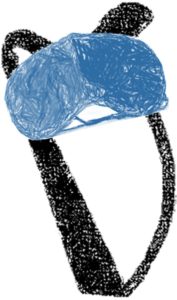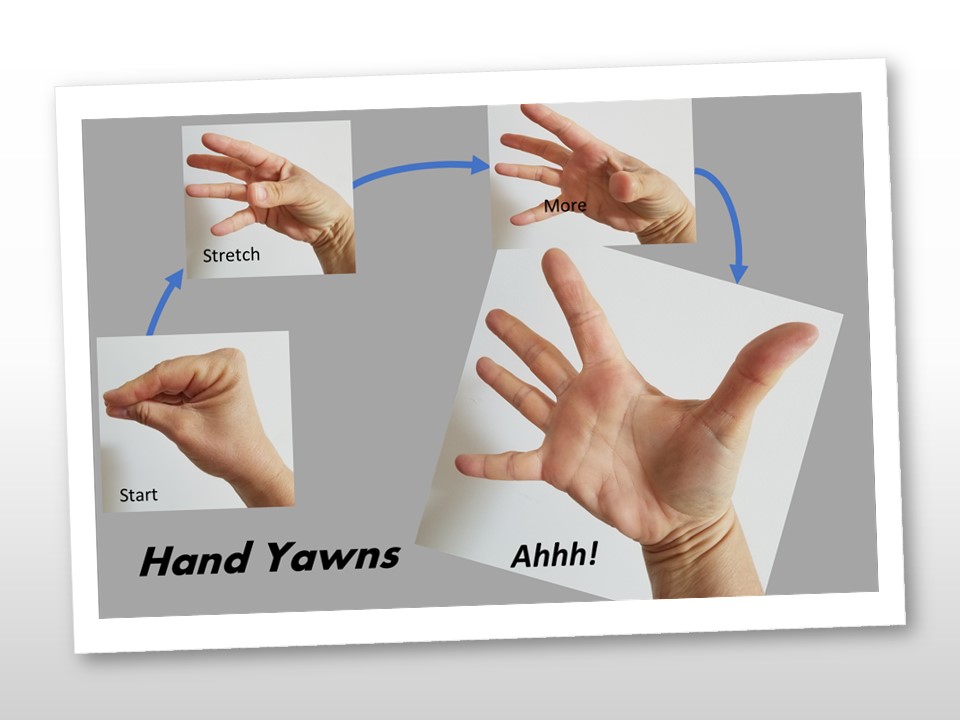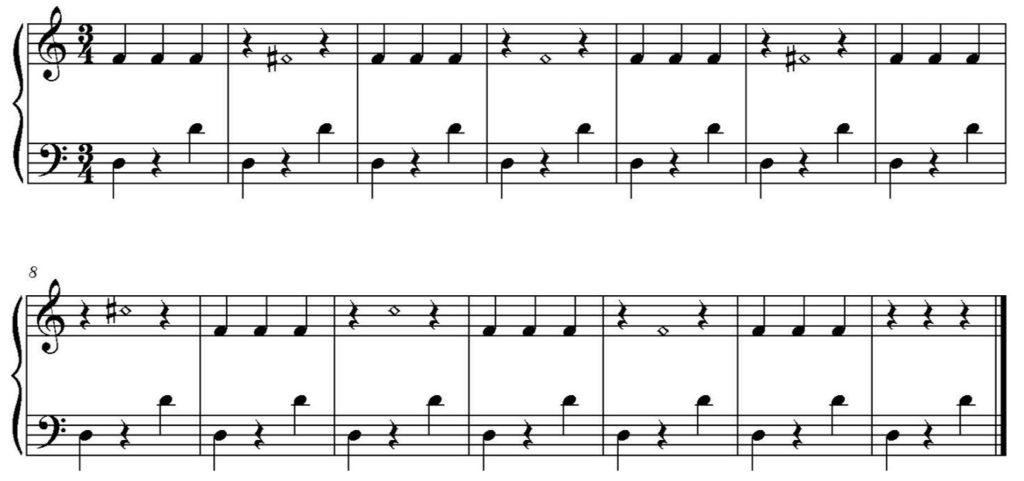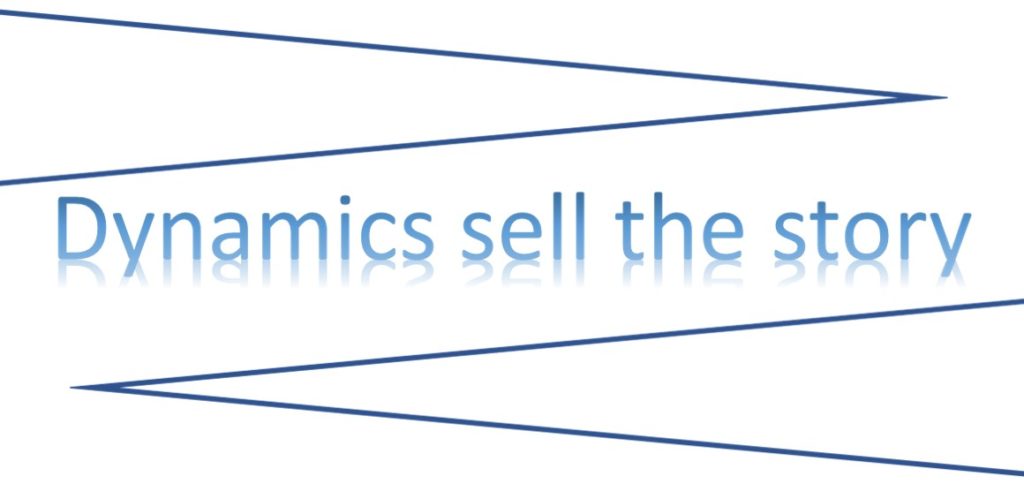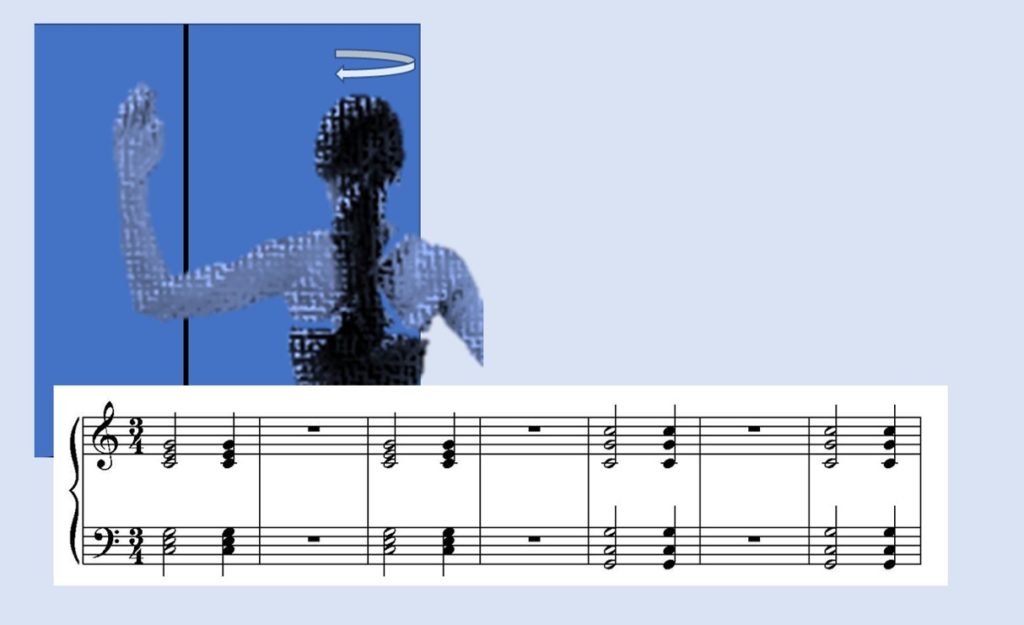Well, you made it – Week Five of Boot Camp! You should be proud of yourself and your hard work. This gives you a foundation to keep building your practice and to refine it to meet your needs. Those needs will likely change as you develop as a harper, but the fundamentals stay the same. So, keep at it and finish strong!
 Stretch – Small Shoulder Rolls are relatively easy, but because we use our shoulders more than we know, you might be tighter in the shoulder than you’d expect.* Begin by sitting (or standing) upright, head up, shoulders down. Place your right fingertips on your right shoulder and your left fingertips on your left shoulder with your arms in front of your chest. Your elbows should be close to your waist. Now, rotate your arms to the outside and “draw circles” with your elbows. Keep your head up. Take your time – go slowly and carefully. If your shoulders are tight, this may be challenging. Repeat three to five times. This stretch can be performed before, after, and during your practice.
Stretch – Small Shoulder Rolls are relatively easy, but because we use our shoulders more than we know, you might be tighter in the shoulder than you’d expect.* Begin by sitting (or standing) upright, head up, shoulders down. Place your right fingertips on your right shoulder and your left fingertips on your left shoulder with your arms in front of your chest. Your elbows should be close to your waist. Now, rotate your arms to the outside and “draw circles” with your elbows. Keep your head up. Take your time – go slowly and carefully. If your shoulders are tight, this may be challenging. Repeat three to five times. This stretch can be performed before, after, and during your practice.
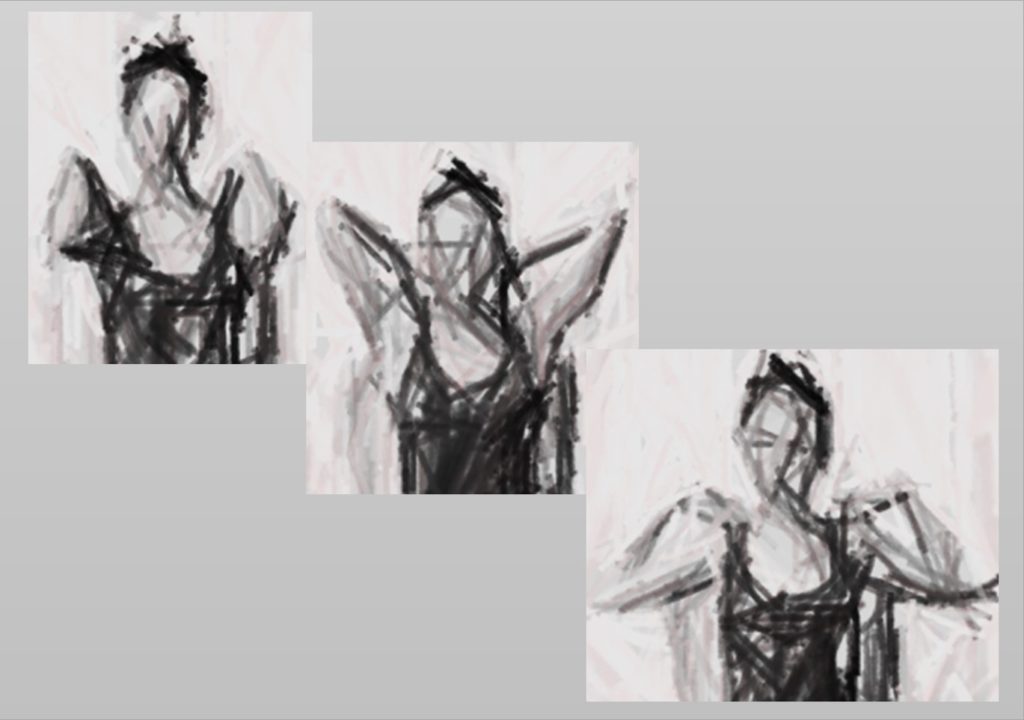 Technique – Dall-ing. Not Daaaahl-ing, Dall-ing. Don’t roll your eyes, I can make up words if I need them! Dall is the Gaelic word for blind – and if the harpers of old could play without seeing, you can play without looking. Yes, it can be scary but, as with everything – if you practice it, you will get better at it. And since most people are primarily visual, giving your other senses a chance to be in charge will change your perspective and will improve your playing whether you’re looking at the harp or not. To practice Dalling, simply close your eyes – and keep them closed! Start by playing scales – make your initial placement and then close your eyes and play. Pay attention – where are your arms? Where are you stretching? How far do your fingers need to move? Once you’ve got that down (and after all – you’ve been playing scales – they’re so easy you can do them with your eyes closed!) move on to the intervals we did in week one (first left hand, then right hand, then hands together). And once that’s easy, move on to playing tunes you know well. All the time you’re playing, you are training yourself to listen, to feel (the strings on your fingers, the harp in your arms, the stretch or bend in your elbow) all those things tell you something about where you are on the harp. Don’t get discouraged – you can do this!
Technique – Dall-ing. Not Daaaahl-ing, Dall-ing. Don’t roll your eyes, I can make up words if I need them! Dall is the Gaelic word for blind – and if the harpers of old could play without seeing, you can play without looking. Yes, it can be scary but, as with everything – if you practice it, you will get better at it. And since most people are primarily visual, giving your other senses a chance to be in charge will change your perspective and will improve your playing whether you’re looking at the harp or not. To practice Dalling, simply close your eyes – and keep them closed! Start by playing scales – make your initial placement and then close your eyes and play. Pay attention – where are your arms? Where are you stretching? How far do your fingers need to move? Once you’ve got that down (and after all – you’ve been playing scales – they’re so easy you can do them with your eyes closed!) move on to the intervals we did in week one (first left hand, then right hand, then hands together). And once that’s easy, move on to playing tunes you know well. All the time you’re playing, you are training yourself to listen, to feel (the strings on your fingers, the harp in your arms, the stretch or bend in your elbow) all those things tell you something about where you are on the harp. Don’t get discouraged – you can do this!
Practice Element – Taking the time. We are all busy. And we sometimes have difficulty cramming all the things we think are important into our days. And its easy to let practicing slip away. Or to get time, but to give our practice short shrift by just playing and not doing mindful work. All of those get in our way. Start by being honest about when you will practice and how much time you have practice. Do not get impatient and want to be able to play something immediately, if not sooner. Or get wrapped up in the illusion that someone else is performing better, faster, stronger than you are. Or be confident that you’re not getting any better. Acknowledge what that amount of time will mean to your in terms of how fast you will be able to prepare new material – and accept that. work from where you are, with what you have to achieve what you want. Give yourself the time to make things happen – in your own time.
Boot Camp – Five Weeks to Better is coming to a close. But the work continues. Keep practicing – do the things that help you move forward and enjoy the journey. At this point, you’re ready to take on the summer! Enjoy it – and let me know what you do and how this Boot Camp helped you be prepared!
*Remember that I’m not that kind of doctor, so please be careful, work within your own abilities (which isn’t to say don’t stretch yourself but also, don’t hurt yourself!). Be careful and only do what you can do. This blog provides general information about trying to stay health and other subjects related to playing the harp. All the content provided in this blog, and in any linked materials, is not intended to be, and should not be construed to be, medical advice. If you have a medical concern, consult with an appropriately-licensed physician or other
health care worker. Never disregard professional medical advice or delay seeking it because of something you have read on this blog or in any linked materials. If you think you may have a medical emergency, call your doctor or 911 immediately. The views expressed on this blog and website have no relation to those of any academic, hospital, practice or other institution with which the author is affiliated. Don’t be thick – these are just suggestions – take care of you!
